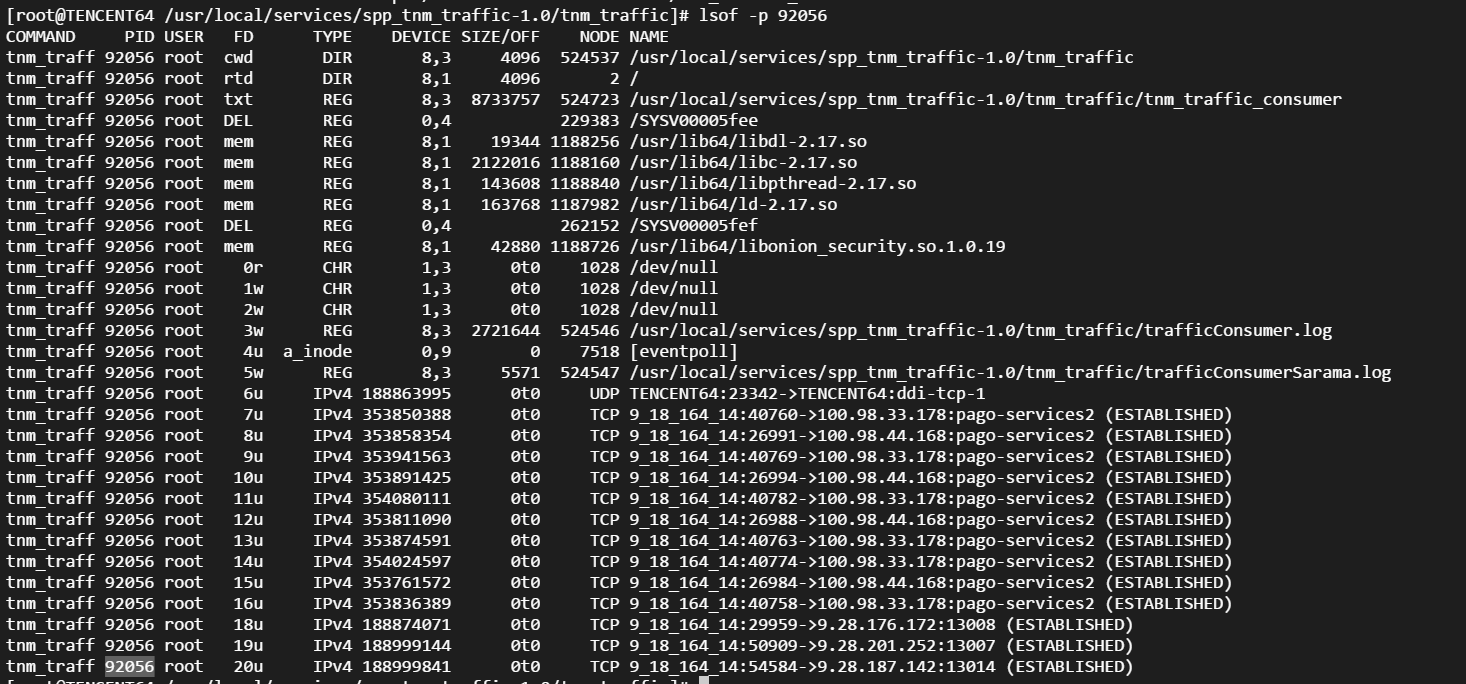注:使用源码安装的原因主要是使用yum安装glusterfs服务端时出现一些依赖库问题
- 准备3台glusterfs服务器(官方也建议至少3台,防止发生脑裂),并在各个服务器的/etc/hosts下面添加如下内容(如使用DNS服务器,则在DNS中添加域名解析)
10.85.3.113 glusterfs-1.example.com 3.114 glusterfs-23.115 glusterfs-3.example.com
- 参照官方文档Build and Install GlusterFS安装依赖库
# yum install autoconf automake bison cmockery2-devel dos2unix flex fuse-devel glib2-devel libacl-devel libaio-devel libattr-devel libcurl-devel libibverbs-devel librdmacm-devel libtirpc-devel libtool libxml2-devel lvm2-devel make openssl-devel pkgconfig pyliblzma python-devel python-eventlet python-netifaces python-paste-deploy python-simplejson python-sphinx python-webob pyxattr readline-devel rpm-build sqlite-devel systemtap-sdt-devel tar userspace-rcu-devel
- 下载userspace-rcu-master并解压到/home/userspace-rcu-master
- 下载glusterfs-xlators/master并解压到/home/glusterfs-xlators-master
- 编译userspace-rcu
# cd userspace-rcu-master # ./bootstrap # ./configure # make && make install # ldconfig
- 下载glusterfs源码并解压到/home/glusterfs-5.7,本次版本为5.7
- 将glusterfs的lib拷贝到系统目录(编译gluster的时候会用到)
# cd /home/glusterfs-5.7
# cp -r libglusterfs/src /usr/local/include/glusterfs
- 安装依赖库uuid,yum install -y libuuid-devel
- 拷贝glupy(编译gluster的时候会用到)
# cp -r /home/glusterfs-xlators-master/xlators/features/glupy/ /home/glusterfs-5.7/xlators/features/
- 按照官方文档编译安装glusterfs
# cd /home/glusterfs-5.7
# ./autogen.sh # ./configure --without-libtirpc # ./configure --enable-gnfs # make # make install
在make的时候可能会遇到如下错误
../../../../contrib/userspace-rcu/rculist-extra.h:33:6: error: redefinition of 'cds_list_add_tail_rcu' void cds_list_add_tail_rcu(struct cds_list_head *newp,^ In file included from glusterd-rcu.h:15:0,from glusterd-sm.h:26from glusterd.h:28from glusterd.c:19: /usr/local/include/urcu/rculist.h:44:6: note: previous definition of ' was here struct cds_list_head *newp,
给下述文件的cds_list_add_tail_rcu函数加上条件编译即可
/usr/local/include/urcu/rculist.h /home/glusterfs-5.7/contrib/userspace-rcu/rculist-extra.h
#ifndef CDS_LIST_ADD_TAIL_CRU #define CDS_LIST_ADD_TAIL_CRU static inline head) { newp->next = head; newp->prev = head->prev; rcu_assign_pointer(head->prev->next,newp); head->prev = newp; } #endif
- 在3台服务器执行如下命令,使用devicemapper
mkdir -p /data/brick chown -R root:65534 /data chmod -R 775 /data vgcreate vgglusterfs /dev/vdb lvcreate -L 499G -n glusterfs vgglusterfs mkfs.xfs /dev/mapper/vgglusterfs-glusterfs #/etc/fstab中添加:/dev/mapper/vgglusterfs-glusterfs /data/brick xfs defaults 0 mount -a
- 在3台服务器执行如下命令,设置开机启动并启动glusterfs
systemctl enable glusterd.service
使用如下命令查看生成的gluster.service的路径,本系统为:/usr/local/lib/systemd/system/glusterd.service
systemctl cat glusterd.service
/usr/local/lib/systemd/system/glusterd.service的内容如下
[Unit] Description=GlusterFS,a clustered file-system server Requires=rpcbind.service After=network.target rpcbind.service Before=network-online.target [Service] Type=forking PIDFile=/var/run/glusterd.pid LimitNOFILE=1048576 Environment="LOG_LEVEL=INFO" ExecStart=/usr/local/sbin/glusterd -p /var/run/glusterd.pid --log-level $LOG_LEVEL $GLUSTERD_OPTIONS KillMode=process SuccessExitStatus=15 [Install] WantedBy=multi-user.target
执行如下命令启动
systemctl daemon-reload
systemctl start glusterd.service
如果遇到“Failed to restart glusterd.service: Unit not found”错误,可能是rpcbind.service没有安装,执行yum install -y rpcbind安装即可
遇到“Failed to start GlusterFS,a clustered file-system server”错误,可以尝试如下方式:
- 可能本机已经启动glusterfs服务,找到进程,kill掉
- glusterd配置错误,找到glusterd.vol文件,并修改“working-directory” 为glusterd.vol所在的路径。如本机的glusterd.vol路径为/usr/local/etc/glusterfs/glusterd.vol,则glusterd.vol中的working-directory一行设置为“working-directory /usr/local/etc/glusterfs"
- 在master1上执行如下命令,添加对端
# gluster peer probe glusterfs-1.example.com
# gluster peer probe glusterfs-2.example.com
# gluster peer probe glusterfs-3.example.com
# gluster peer status
- 在master1上创建并启动volume,大小为5G
gluster volume create volume-5G replica 3 glusterfs-1.example.com:/data/brick/glusterfs1 glusterfs-2.example.com:/data/brick/glusterfs2 glusterfs-3.example.com:/data/brick/glusterfs3 gluster volume start volume-5G
使用如下命令查看volume
gluster volume status
gluster volume info
容器环境下推荐Replicated 模式,更多信息参见官方文档,注意部分模式已经废弃
- 在客户端机器上安装glusterfs客户端
# yum install glusterfs-client -y
- 在客户端挂载服务端volume,第一种方式为采用nfs挂载,第二种采用glusterfs命令行挂载,效果一样
mount -t glusterfs glusterfs-1.example.com:/volume-5G /data/mounttest/ glusterfs --volfile-id=volume-5G --volfile-server=glusterfs-1.example.com /data/glusterfsclient
- 需要注意的是存在多个glusterfs服务器时,client挂载glusterfs服务器的目录时并不需要对其进行负载均衡,只要挂载其中一台glusterfs的服务器的目录即可。本例中的client为:10.85.3.111,服务端为:10.85.3.113~10.85.3.115,client仅挂载了10.85.3.113的目录,但在client的tcp链接上可以看到如下链接状态(已删除无关信息),即client其实与3个服务端都建立了链接,即使一个服务器宕机或删除任何一个服务器的brick都不会影响其他两台服务器的数据存储。客户端挂载仅用于初始化拓扑。更多参见StackOverflow
# netstat -ntp Active Internet connections (w/o servers) Proto Recv-Q Send-Q Local Address Foreign Address State PID/Program name tcp 0 3.111:1015 3.115:49152 ESTABLISHED 10679/glusterfs tcp 1017 3.113:1023 24007 ESTABLISHED 1016 3.114:10679/glusterfs
TIPS:
- gluster命令行可以参见官方文档和man命令
- 在执行”gluster delete volume $volume_name“命令后再添加时可能会出现如"Error: /data/brick/glusterfs1 is already part of a volume"的错误,使用如下方式清理环境即可
# rm -rf /data/brick/glusterfs1/* # setfattr -x trusted.glusterfs.volume-id /data/brick/glusterfs1/
# 开启 指定 volume 的配额 $ gluster volume quota k8s-volume enable # 限制 指定 volume 的配额 $ gluster volume quota k8s-volume limit-usage / 1TB # 设置 cache 大小,默认32MB $ gluster volume set k8s-volume performance.cache-size 4GB # 设置 io 线程,太大会导致进程崩溃 $ gluster volume set k8s-volume performance.io-thread-count 16 # 设置 网络检测时间,默认42s $ gluster volume set k8s-volume network.ping-timeout 10 # 设置 写缓冲区的大小,默认1M $ gluster volume set k8s-volume performance.write-behind-window-size 1024MB
- gluster brick的删除和添加,使用remove-brick时需要指定副本数,remove-brick无法删除所有的副本。如需要可以使用gluster volume delete命令
volume remove-brick <VOLNAME> [replica <COUNT>] <BRICK> ... <start|stop|status|commit|force>
volume add-brick <VOLNAME> [<stripe|replica> <COUNT> [arbiter <COUNT>]] <NEW-BRICK> ... [force]
- 磁盘测试
下载fio,解压后执行“make & make install”即可。可能需要执行"yum install libaio-devel"
- glusterfs的监控
在一台服务器上下载并执行“make build”编译gluster_exporter,直接使用./gluster_exporter启动即可。(为保证node节点有效性,最好在每台服务器上安装node_exporter)。使用如下方式可以简单启动一个exporter,监听端口默认是9189
nohup gluster_exporter --web.telemetry-path=/usr/local/sbin/gluster" 2>&1 &
在Prometheus中添加新job,即可使用Prometheus监控glusterfs
- job_name: glusterfs1 static_configs: - targets: [10.85.3.113:9189] labels: alias: glusterfs1
- glusterfs默认日志路径为:/var/log/glusterfs/glusterfs.log
- glusterfs client挂载磁盘时必须指定域名
- client去挂载目录删除对应挂载的进程即可,使用ps -ef|grep glusterfs查看
- 使用glusterfs时建议设置目录权组为65534,权限设置为775,并在挂载的进程上加上Supplement group为65534
- 使用gluster volume status [all | <VOLNAME> [nfs|shd|<BRICK>|quotad|tierd]] [detail|clients|mem|inode|fd|callpool|tasks|client-list]可以查看相关的volume信息,如gluster volume status
VOLNAMEclients可以查看volume的client信息
目前kubernetes使用glusterfs storageclass时需要用到heketi,下面讲解heketi的部署
在官网下载heketi压缩包heketi-vx.x.x.linux.amd64.tar.gz,可以按照官网文档进行安装部署,虚机部署方式如下:
- 创建目录:
mkdir /etc/heketi/
mkdir /var/lib/heketi/
- 将压缩包中的heketi.json拷贝到/etc/heketi/路径下,修改heketi.json文件,使用ssh作为与glusterfs通信方式,主要修改内容如下(如有需要,请修改port)
"executor": ssh",_sshexec_comment": SSH username and private key file informationsshexec: { keyfile/etc/heketi/heketi_keyuserrootport22"fstabOptional: Specify fstab file on node. Default is /etc/fstabpv_data_alignmentOptional: Specify PV data alignment size. Default is 256Kvg_physicalextentsizeOptional: Specify VG physical extent size. Default is 4MBlv_chunksizeOptional: Specify LV chunksize. Default is 256Kbackup_lvm_metadata": false_debug_umount_failuresOptional: boolean to capture more details in case brick unmounting failsdebug_umount_failurestrue },
- 添加授权,使用如下方式生成密钥,
ssh-keygen -t rsa -q -f /etc/heketi/heketi_key -N ''
chmod 775 /etc/heketi/heketi_key
在所有gluasterfs服务器上为heketi添加ssh互信
cat heketi_key.pub >> /root/.ssh/authorized_keys
- 创建systemd启动文件:/usr/lib/systemd/system/heketi.service,内容如下
[Unit] Description=Heketi Server [Service] Type=simple WorkingDirectory=/var/lib/heketi EnvironmentFile=-/etc/heketi/heketi.json User=heketi ExecStart=/usr/bin/heketi --config=/etc/heketi/heketi.json Restart=on-failure StandardOutput=syslog StandardError=syslog [Install] WantedBy=multi-user.target
并在/etc/systemd/system/multi-user.target.wants中创建软连接
ln -s /usr/lib/systemd/system/heketi.service heketi.service
加载并启动heketi
systemctl daemon-reload
systemctl enable heketi
systemctl start heketi
如果启动时出现如下错误,可在/etc/heketi/heketi.json中删除对应的行即可,如出现如下错误,删除"xfs_sw"对应的行,使用默认值即可。(建议配置或删除所有“Optional”的行)
ERROR: Unable to parse configuration: json: cannot unmarshal string into Go struct field KubeConfig.xfs_sw of type int
- 执行如下命令,加载拓扑文件
$ export HEKETI_CLI_SERVER=http://<heketi server and port> $ heketi-cli topology load --json=<topology>
拓扑文件内容如下,需要注意的是,heketi只能使用裸磁盘,不能使用文件系统以及lvm
{ clusters: [ { nodes: [ { node: { hostnames: { manage: [ 10.85.3.113 ],1)">storage ] },1)">zone },1)">devices: [ { name/dev/vdbdestroydata } ] },{ 10.85.3.11410.85.3.115 } ] } ] } ] }
- 使用如下命令创建一个10Gb的volume
heketi-cli volume create --size=10 --name="test"
可以看到新创建的volume
# heketi-cli volume list
Id:0a0e0fd1f81973044bb0365e44c08648 Cluster:b988c638edcef9b5b44e0e42ccef30b7 Name:tes
在glusterfs上查看可以看到heketi其实也是使用了devicemapper
# df -h Filesystem Size Used Avail Use% Mounted on ... /dev/mapper/vg_c17870f6f2870ff1c8001ad19b3b9d5b-brick_e3e02d5357b540ce340ec5328fe8b0ec 10G 33M 10G 1% /var/lib/heketi/mounts/vg_c17870f6f2870ff1c8001ad19b3b9d5b/brick_e3e02d5357b540ce340ec5328fe8b0ec
当然此时也可以使用gluster命令查看volume
# gluster volume list
test
heketi命令行一般如下
export HEKETI_CLI_SERVER=http:<heketi server and port> heketi-cli cluster list heketi-cli cluster info $ID heketi-cli node list heketi-cli node info $ID heketi-cli topology info heketi-cli volume create --size=10 10G heketi-cli volume delete $ID
heketi-cli device disable $ID
keheti-cli device remove $ID
heketi-cli device delete $ID
注意:使用heketi管理volume后,仅使用heketi,不能glusterfs和heketi混用
- openshift使用heketi做动态pvc的方式如下
首先创建storageclass
kind: StorageClass apiVersion: storage.k8s.io/v1 metadata: name: glusterfs namespace: demo provisioner: kubernetes.io/glusterfs parameters: resturl: http://10.86.3.113:18080 restuser: root restauthenabled: false"
然后创建pvc
apiVersion: v1 kind: PersistentVolumeClaim metadata: name: glusterfs-test : demo spec: accessModes: - ReadWriteMany resources: requests: storage: 30Gi storageClassName: glusterfs
需要注意的是如果heketi topology文件中使用了域名,则该域名必须能够被kubernetes解析,否则会失败
TIPS:
- heketi删除node之前需要移除该node的device和volume
- openshift 3.6中在配置pvc的时候可能会出现如下问题,在出现错误时没有给出错误信息,内容为nil。该问题为3.6版本的bug,建议升级
Failed to provision volume with StorageClass glusterfs": glusterfs: create volume err: failed to create endpoint/service <nil>
- 如果删除heketi出现问题,可以手动清理环境,执行如下操作
systemctl stop heketi 在所有glusterfs服务器上执行如下操作 umount /var/lib/heketi/mounts/vg_xxxxxxx/brick_xxxx rm -rf /var/lib/heketi/* 删除heketi创建的lv和vg
参考:
https://www.cnblogs.com/jicki/p/5801712.html
https://www.ibm.com/developerworks/cn/opensource/os-cn-glusterfs-docker-volume/index.html
https://jimmysong.io/kubernetes-handbook/practice/using-glusterfs-for-persistent-storage.html
https://pdf.us/2019/03/15/3020.html
https://github.com/psyhomb/heketi
https://github.com/heketi/heketi/blob/master/docs/admin/volume.md

 linux常用进程通信方式包括管道(pipe)、有名管道(FIFO)、...
linux常用进程通信方式包括管道(pipe)、有名管道(FIFO)、... Linux性能观测工具按类别可分为系统级别和进程级别,系统级别...
Linux性能观测工具按类别可分为系统级别和进程级别,系统级别... 本文包含作者工作中常用到的一些命令,用于诊断网络、磁盘占满...
本文包含作者工作中常用到的一些命令,用于诊断网络、磁盘占满... linux的平均负载表示运行态和就绪态及不可中断状态(正在io)的...
linux的平均负载表示运行态和就绪态及不可中断状态(正在io)的... CPU上下文频繁切换会导致系统性能下降,切换分为进程切换、线...
CPU上下文频繁切换会导致系统性能下降,切换分为进程切换、线...